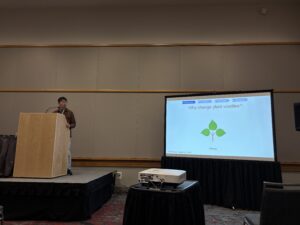Yong-Sin gave a great talk at this year’s Entomological Society of America annual meeting in Portland, Oregon. He walked away with a 1st place win in the Plant – Insect Ecology Section: Chemical Ecology.
His award winning 10 minute talk was titled, “What If a Plant Doesn’t Smell Like a Plant? Suppressing Monoterpenes to Enhance Cotton Pest Resistance.” He presented his ongoing research using virus-mediated gene silencing to study how insects respond when you change a cotton plant’s ability to produce volatile chemical signals. Stay tuned for more cool results!

